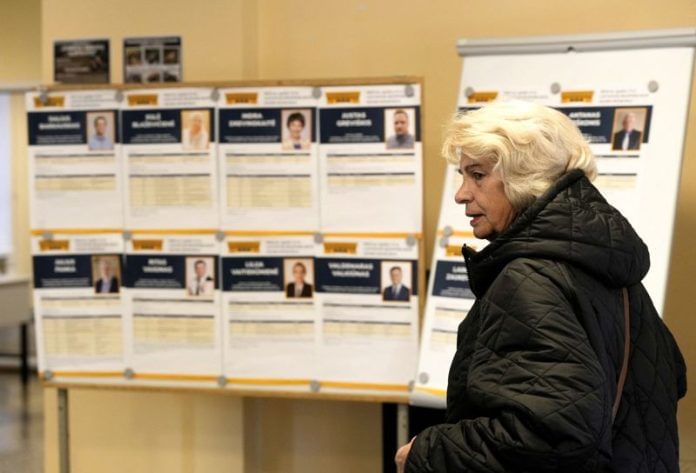By Andrius Sytas
VILNIUS/PANEVEZYS, Lithuania (Reuters) -Lithuania’s centre-left opposition Social Democrats (SD) will attempt to form a majority coalition government together with two other parties following the country’s parliamentary election, its leader said on Sunday.
Early results showed SD ahead in the election, which was dominated by concerns over living costs and potential threats from neighbouring Russia.
“I think it will be a coalition with two left parties,” Vilija Blinkeviciute told reporters, adding the parties in question were the Farmers and Greens and For Lithuania. “I think it will be a good left coalition.”
With 61% of votes counted, SD had 22% support, making it the largest party ahead of the anti-establishment Nemunas Dawn with 17% and the ruling Homeland Union with 15%.
Some 52.1% of the Baltic nation’s eligible voters cast a ballot, up from 47.2% four years ago, official data showed.
Blinkeviciute said foreign policy would not change and helping Ukraine remained a priority.
“I think that our voters, our people said that they want some changes,” she said, pointing to earnings, housing, healthcare and education as key areas of concern.
Lithuania’s centre-right government of Prime Minister Ingrida Simonyte saw its popularity eroded by inflation that topped 20% two years ago, as well as by deteriorating public services and a widening gap between rich and poor.
“I got bored with the old government. I want something new,” Hendrikas Varkalis, 75, said after casting his vote in Panevezys, about 100 kilometres northwest of the capital Vilnius.
The Baltic state of 2.9 million people has a hybrid voting system in which half of the parliament is elected by popular vote, with a 5% threshold needed to win seats. The other half is chosen on a district basis, a process which favours larger parties.
If no candidate gets more than 50% of the vote in a district, its top two candidates face each other in a run-off on Oct. 27.
Domestic issues loomed large in the election campaign, with the SD vowing to tackle increased inequality by raising taxes on wealthier Lithuanians to help fund more spending on healthcare and social spending.
But national security is also a major concern in Lithuania, which is part of the eastern flank of NATO and the European Union and shares a border with the Russian exclave of Kaliningrad as well as with Belarus, a close Moscow ally.
Three-quarters of Lithuanians believe Russia could attack their country in the near future, a Baltijos Tyrimai/ELTA poll found in May.
The main parties strongly support Ukraine in its war with invading Russian forces and back increased defence spending.
(Reporting by Andrius Sytas in Vilnius and Janis Laizans in Panevezys; Editing by Hugh Lawson, David Holmes and Chris Reese)
Disclaimer: This report is auto generated from the Reuters news service. ThePrint holds no responsibilty for its content.






